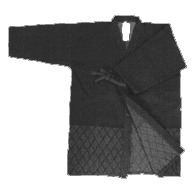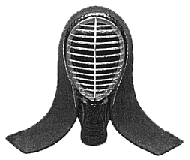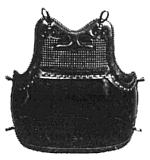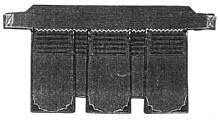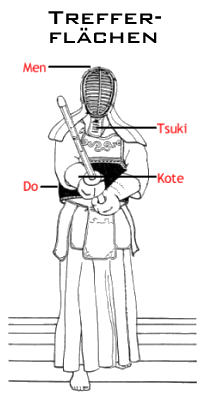Clothing
Keiko gi (jacket)
The keiko gi is a thick jacket made from cotton, dyed blue with indigo. It is said that indigo has disinfecting and antihemorrhagic qualities. This is why workwear traditionally was dyed with indigo in Japan.
Hakama (trousers)
Hakama are a type of traditional Japanese clothing. Its seven deep leats have religious meanings. The two deep pleats at the back refer to a Japanese myth. According to this story about the national unification of Japan, the deities Takemikazuchi-no-kami and Futsu-nushi-no-kami worked hand in hand with the goddess of the sun, Amaterasu – one of the most important deities in Japanese Shinto belief – to lead the nation without force of arms, but with dignity. Each pleat symbolizes one of the two deities, the koshi ita in the middle, holding the pleats together, represents Amaterasu. All three combined mean harmony (wa). The five deep pleats at the front stand for the important virtues of jin (compassion), gi (righteousness), rei (politeness), chi (wisdom), and shin (sincerity).
The Shinai

The bokuto

Kendoka with explanations
What does kendo equipment cost?
If you like to try out kendo, you don’t need to buy anything in advance. Advanced kendoka will lend you one of their shinai for the first couple of trainings. If you decide to continue practice, an own shinai is the first purchase you should make.
A shinai costs about 30€ to 55€. Ask your trainer where to buy one and what to pay attention to.
A bokuto costs around 30€. There are cheaper versions but you shouldn’t go for the very cheapest. Normally, a bokuto should last a lifetime.
Hakama and gi either come separately or as a set. Prices vary a lot. 60€ to 80€ for a set is a good price, but the sky is the limit really. Quality varies in textile processing (neat seams, sewed by machine or hand) and fabric. Asking your trainer for advice is highly recommended.
A protective armor costs around 600€. You should only buy one after at least 6 to 12 months of practice in consultation with your trainer. In some clubs you might even find members who operate kendo equipment businesses. Just ask around.

